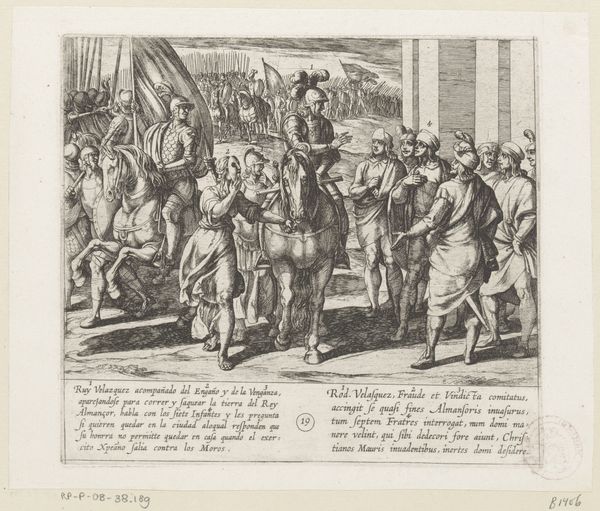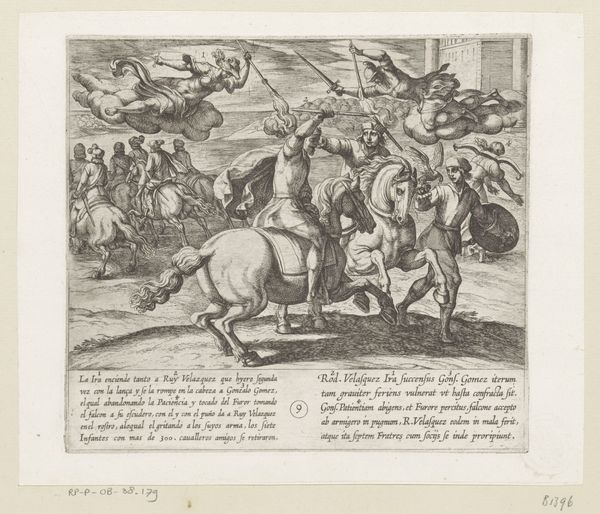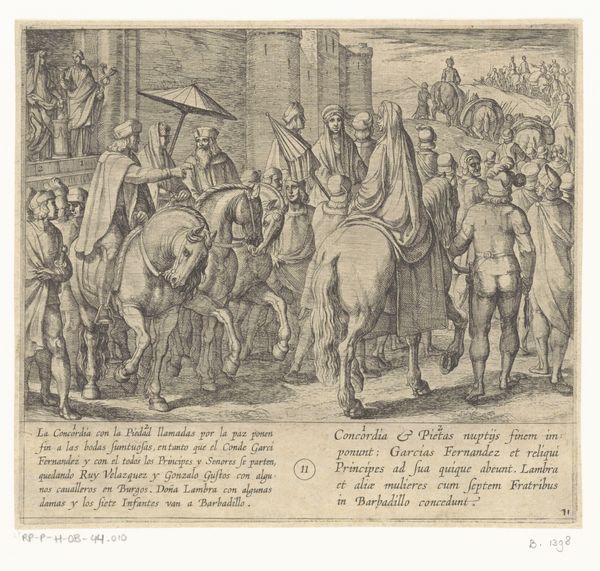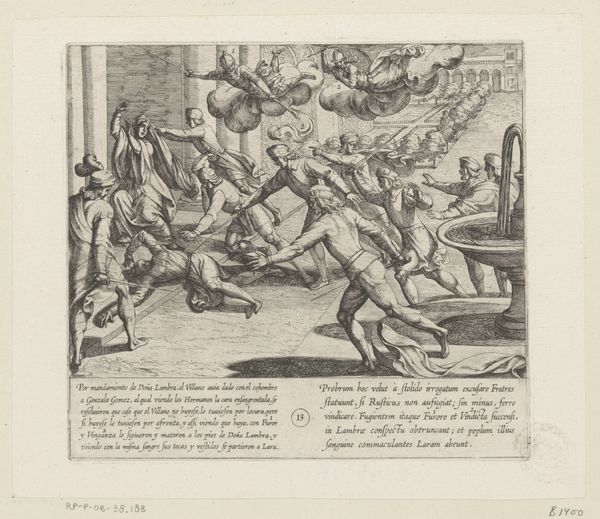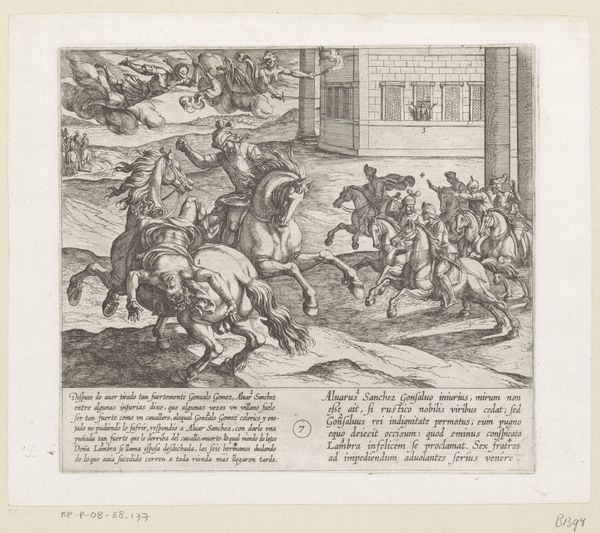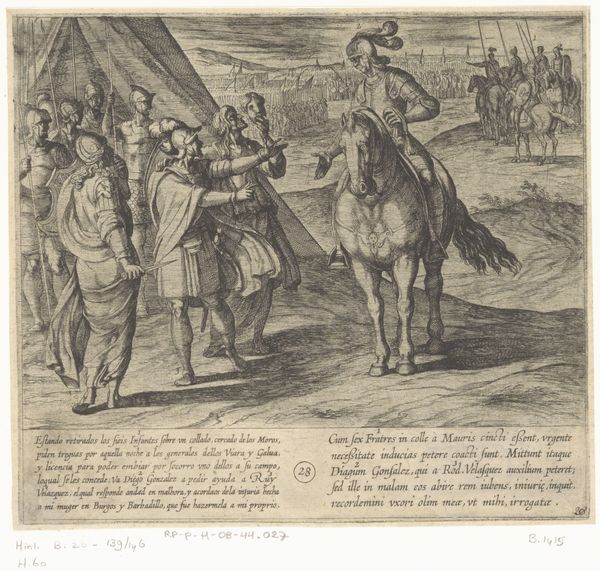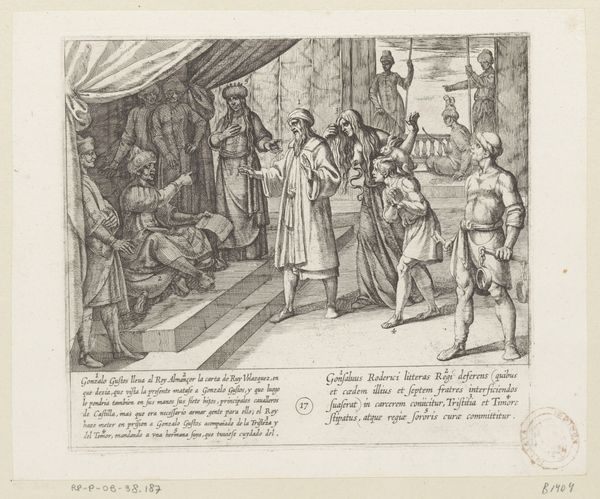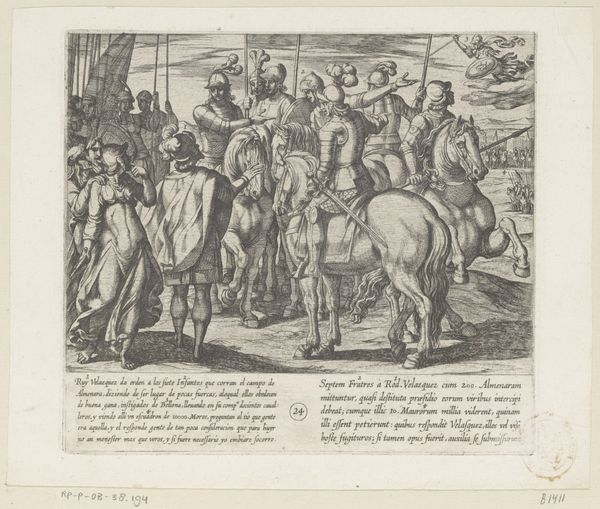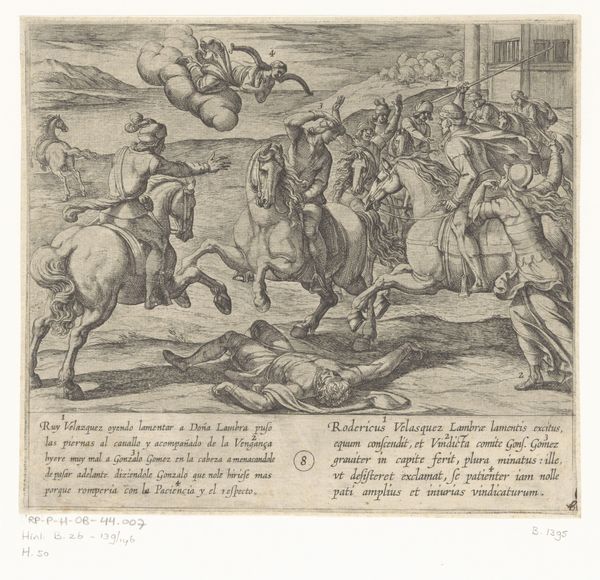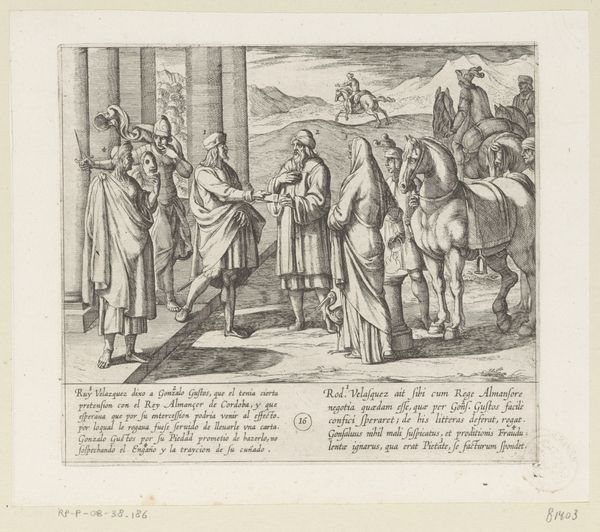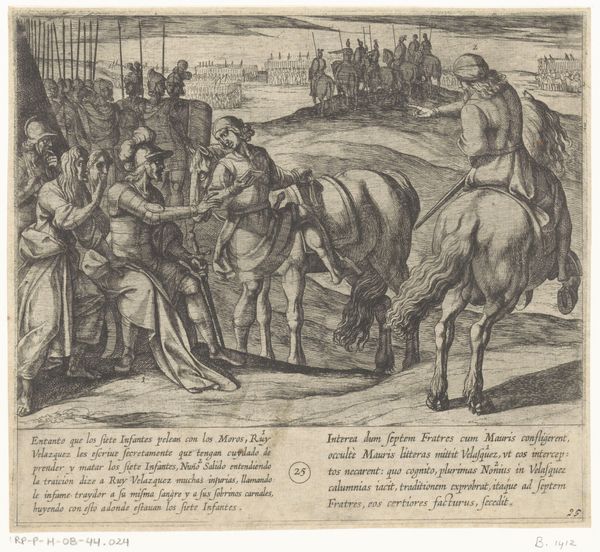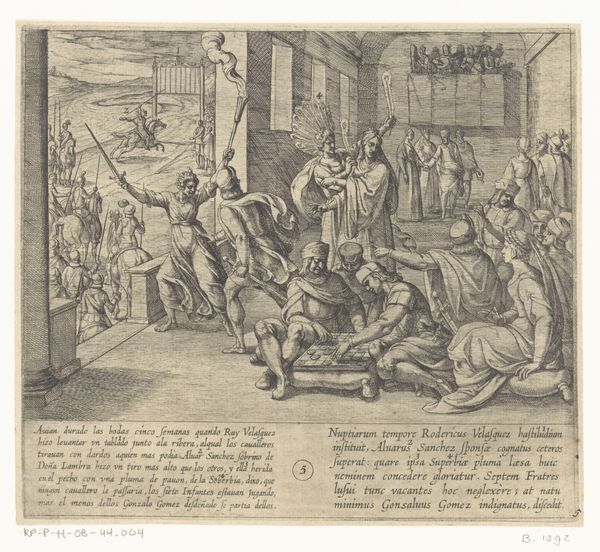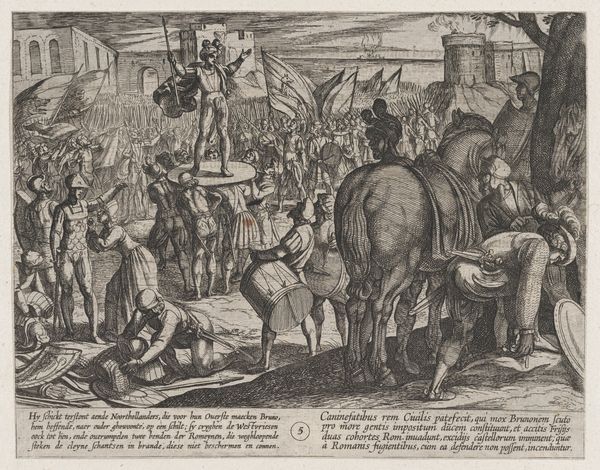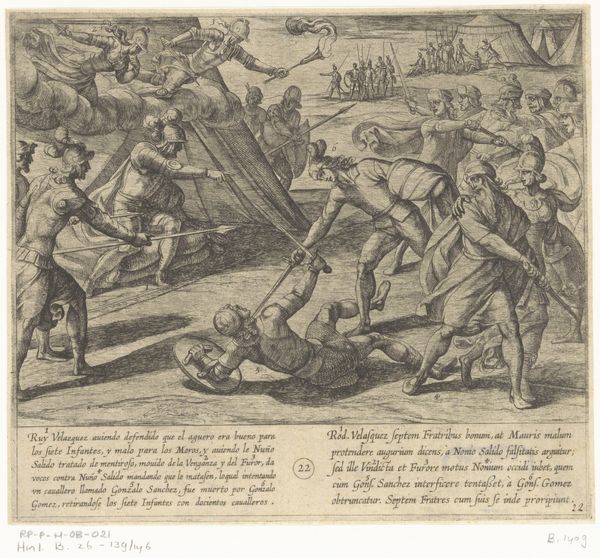
Mudarra daagt Ruy Velazquez uit en een driedaags bestand wordt gesloten 1612
0:00
0:00
print, engraving
#
narrative-art
#
baroque
# print
#
old engraving style
#
figuration
#
history-painting
#
engraving
Dimensions: height 185 mm, width 206 mm
Copyright: Rijks Museum: Open Domain
Curator: Look at the way Antonio Tempesta captures such a pivotal moment in this engraving, created around 1612. Titled "Mudarra daagt Ruy Velazquez uit en een driedaags bestand wordt gesloten"— quite a mouthful, but roughly translated it’s Mudarra challenging Ruy Velazquez, leading to a three-day truce. Editor: My immediate impression is drama. The body language alone tells a story. A heated exchange, perhaps? Is it a feeling of animosity suspended, frozen in time, awaiting its resolution? Curator: Precisely! Tempesta masterfully illustrates a scene charged with conflict. You see Mudarra, consumed by fury, being restrained from attacking Ruy Velazquez, who provoked him. A Count intervenes to establish a truce. Editor: And there’s that almost theatrical positioning of the figures. Everything’s so clearly laid out, everyone in their specific role, emphasizing hierarchy, I think. I’m intrigued by the role that fury and masculine pride are playing here... is this moment of imposed ceasefire more symbolic of patriarchal desires? Curator: It's very possible. Remember the social context – honor, vengeance, and conflict resolution through duels were ingrained in that era. But let's not reduce it all to solely "masculine" traits, it's about class, religion, family reputation... Editor: Good point. This print reminds us that peace—even temporary—often emerges from confrontations driven by deep social inequities and cultural expectations, ones still resonant today, right? We can still see similar power struggles played out in contemporary negotiations around race, gender, and class. Curator: Yes. Engravings such as this offer us insights not just into historical events, but into the complex interplay of emotions, social norms, and power dynamics that still resonate centuries later. Editor: Exactly! Art, in every period, allows us to trace echoes of past conflicts into the heart of contemporary dialogues. And in these dialogues we often discover and even negotiate, at last, how it impacts social structures now.
Comments
No comments
Be the first to comment and join the conversation on the ultimate creative platform.
